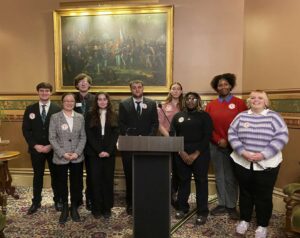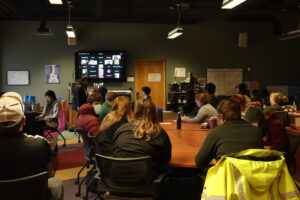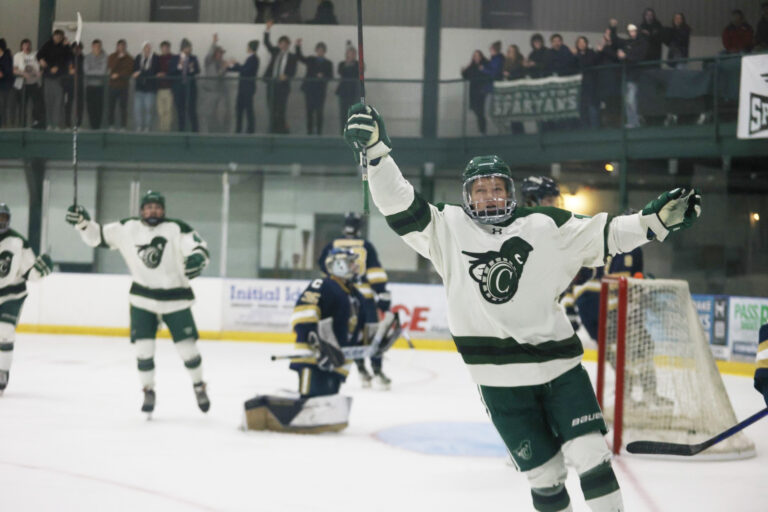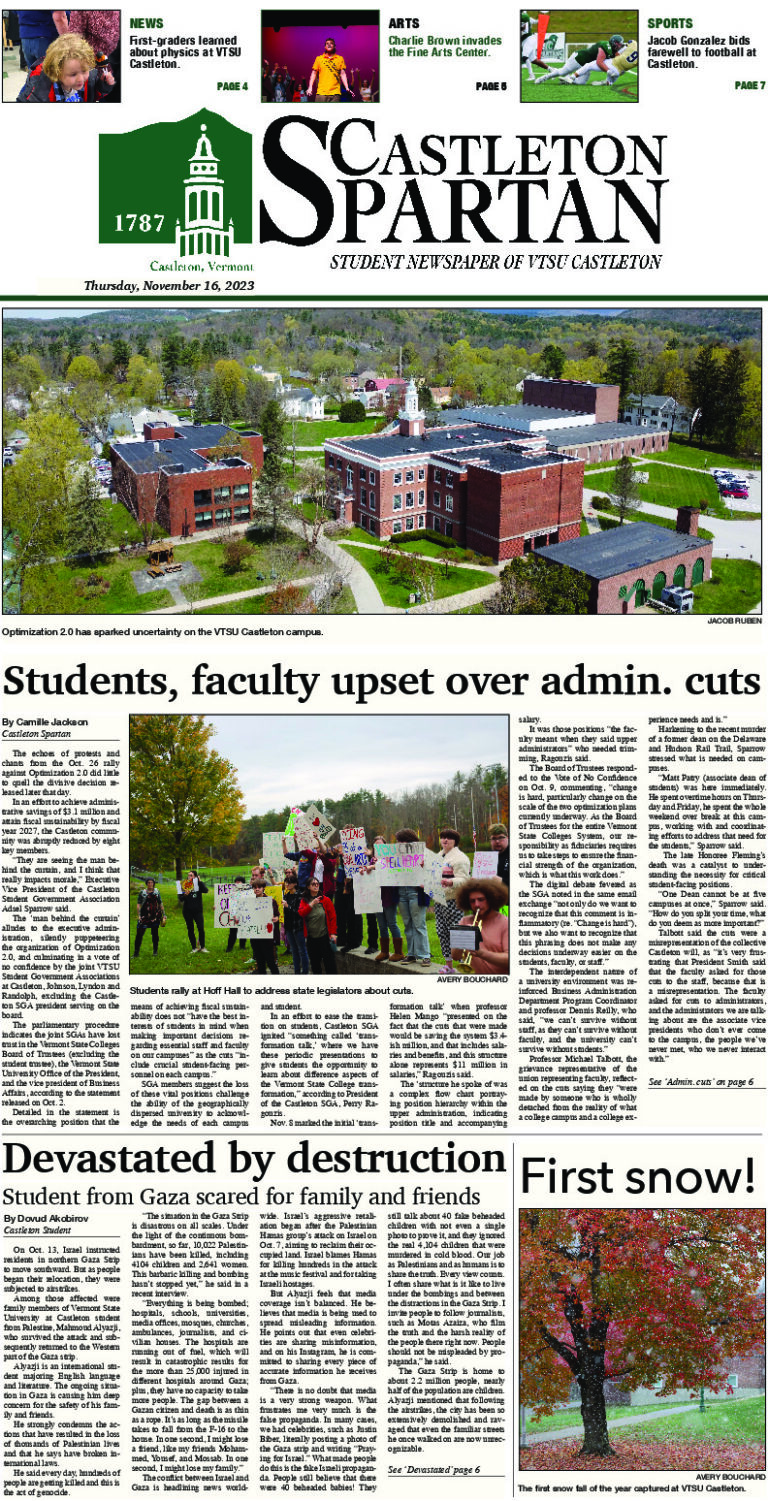Stepping up at the State House
Students, faculty respond to admin. cuts at State House press conference and BoT meeting

On Nov. 13, Vermont State University students and faculty hosted a press conference at the State House in Montpelier to push back on administrative cuts.
“Listen to us as we plead for these decisions made through Optimization 2.0 and Administrative Optimization to be rescinded,” said Castleton Executive Vice President of Student Government Association Adsel Sparrow, during the press conference. “Without these staff and faculty members, we will fail, and our university will fall.”
In attendance at the State House were student representatives from Castleton, Lyndon, Johnson, and Randolph campuses, each providing their own statements in response to the cuts.
“The goal of this merger was to create a stronger infrastructure within our college system. Yet we are running on skeleton crews on each campus,” added Castleton President of Wellness Taylor Cohen. “We have loss so many individuals that support and help students, that now the quality of student life is suffering.”
Cohen highlighted the dismissal of Operations Coordinator for Marketing and Communications Leo Richardson, saying that the news was “devasting” not just for Cohen, but “the entirety of the clubs he worked with and all of the students he worked intimately with.”
But she emphasized the need for each of the cut positions at Castleton, naming Matthew Patry, Renee Boupre-White, Bridget Olson, Jake Rick, Rita Geno, Svea Howard, and Joann Larson.

Castleton SGA Treasurer Zack Durr explained how in the Administrative Optimization report, staff cuts were justified by citing comparable institutions having a 14:1 student-staff ratio, while VTSU has an 11:1 ratio.
However, Durr said this comparison did not consider administrative structure.
When analyzing the compared institutions of Eastern Connecticut State University, Western Connecticut State University, Plymouth State University, Framingham University, and Worchester State University, he found that they had an average of four vice presidents and four assistant or associate vice presidents.
Compare that to VTSU’s four vice presidents and 14 assistant vice presidents, he said.
“This proves that we have optimized administration in the wrong places,” said Durr. “We eliminated student facing positions yet left our enlarged administrative structure essentially untouched.”
Lyndon President of the Ten Percent Committee Annie Walker discussed the effects Optimization 2.0 and Administrative Optimization have had on student morale.
“At Lyndon, we are simply tired. Tired of having to constantly fight our administrative on decisions that greatly impact our university,” said Walker. “We are not opposed to change; we are opposed to having no say in those changes.”
Walker mentioned the dismissal of Associate Dean of Students, Jonathan Davis, saying his role is crucial to the Ten Percent Committee, which funds projects to bolster student morale.
“Without our associate dean, I fear that we will not survive much longer, and we will be closer to closing our campus each day,” she said.
This stance was shared by Randolph SGA Vice President John Porter, who said the ridding of their associate dean greatly damages their ability to communicate with administration.
Earlier, before the press conference, there was an open comment session at the Board of Trustees meeting, hosted over Zoom. Nearly 50 students gathered in the Castleton SGA office, and there were another estimated 125 participants on Zoom, not including the board.

“It’s so ironic, since the students, faculty, and staff have responded to change, but the board remains the same,” said Castleton political science professor Rich Clark.
He described the board as “isolated” from all five campuses and urges members to “come to the campuses to see how your decisions affect us.”
Castleton Administrative Assistant Pam Alexander gave the analogy of a car dealership and how people stop coming if you cut service, salespeople, and the grounds.
“Suddenly they realize their personnel that made the business what it is, is no longer there,” said Alexander.
Others pointed out that cuts were “disorganized,” describing it as a “coin toss” who would lose their job.
Later that evening, the at-the time Interim President Nolan Atkins responded to the open comment in a school-wide statement.
Atkins acknowledged the difficulty of achieving fiscal sustainability, however, says he is excited that it now seems attainable.
He urges community members to express themselves in a manner consistent with the VTSU values of “respect, integrity, student success, and DEISJ.”
“If we continue to communicate and interact in a confrontational, divisive, combative manner, it will create poor admissions outcomes, frustration on our campuses, and impact the wellbeing of our current and future students,” he said.
But those who participated in the press conference and comment period at the trustees meeting argue that students and faculty did conduct themselves in this way. Although many responses conveyed emotion, and some pointed to certain positions as responsible, most responses advocated for student needs, as voiced by the students themselves.
For those who would like to respectfully share their thoughts about Optimization 2.0 and Administrative Optimization, Castleton Student Government Association advises them to sign up for public comment at SGA meetings, Monday nights at 8 p.m., and to write Vt. legislators.








